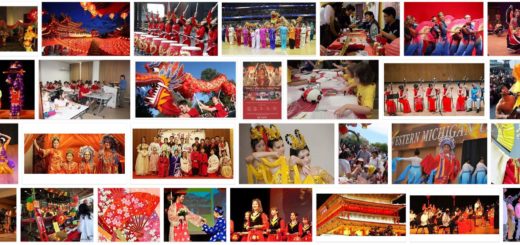Wudang Daoist Shrines (World Heritage)
The 400 km long mountain region in the Hubei province is one of the sacred mountains of Daoism with its 72 peaks. There are almost 130 Daoist sites here. The main attractions for pilgrims include the Golden Hall, the Palace of the Purple Cloud and the Stone Hall of the South Rock.
Wudang Daoist Sanctuaries: Facts
| Official title: | Daoist shrines in the mountains of Wudang |
| Cultural monument: | the 400 km long Wudang Mountains with 72 peaks, one of the sacred mountains of Daoism, the “doctrine of the path”, which, although not verifiable, goes back to Laozi, the “old master”; with 129 Daoist sites such as the 5.5 m high Golden Hall (Jin Dian), the »Palace of the Purple Cloud« and the »Stone Hall of the South Rock« (Nan Yan Gong), the Yu-Zhen Palace and the » Palace of Supreme Harmony “(Tai He Gong) |
| Continent: | Asia |
| Country: | China, Hubei |
| Location: | near Shiyan, northwest of Wuhan |
| Appointment: | 1994 |
| Meaning: | unique art and architecture of Daoism from the epochs of the Yuan, Ming and Qing dynasties |
Wudang Daoist Sanctuaries: History
| 4th / 3rd Century BC Chr. | Creation of the first Daoist classic »Daodejing« (»Classic of the Way of Virtue«) |
| 1363 | Victory of the troops of Emperor Zhu Yuanzhang over the Mongols, beginning of the heyday of Wudang Shan |
| 1413 | Construction of the “Palace of the Purple Cloud” and the “Stone Hall of the South Rock” |
| 1416 | Construction of the Golden Hall and the “Palace of Supreme Harmony” |
| 1417 | Construction of the Yu-Zhen Palace |
| 1522 | Construction of the Xuan Yue Gate |
Home of shadow boxing
“No high jumps or high sentences, no running. Feet firmly on the ground. Just bending the body and moving the knees and hips sideways. (…) The whole body is transformed into a hieroglyph, a sequence of hieroglyphs, of positions, modulating from one meaning to another (…) “, this is how the English author Aldous Huxley described Taijiquan in his novel” Eiland “, the shadow boxing, the greatly slowed down and stylized fight against an invisible opponent and one of the favorite morning activities of the Chinese. One would hardly suspect that there is a martial art behind these soft, rounded, not at all aggressive-looking movements with which millions of Chinese start their day.
The “meditation in motion” should unite body and mind in harmony. This method of mental and physical training goes back to the monk Zhang Sanfeng, who lived in a Daoist monastery on Mount Wudang in the 13th century. There, according to tradition, he observed the fight between a crane and a snake. The crane danced back and forth and flapped its wings, while the snake remained in an upright position and at first smoothly avoided the attacks of the bird, then suddenly darted forward in a targeted manner. Inspired by his observation, the monastery brother developed exercises based on this fight between the two animals. However, it took away their dynamism and strength, because their main purpose should lie in relaxation and spiritual immersion.
Long before the “Patriarch of the Shadow Boxers” lived and taught on Wudang Shan, this mountain region was considered sacred by the Chinese. Legend has it that the great cultural hero of the past, Shennong, is said to have collected medicinal herbs in the Wudang Mountains around five millennia ago. The “divine farmer” is considered to be the forefather of the Chinese art of healing; The oldest book on medicinal plants in China, the “Shennong bengao” from the 2nd century BC, is based on him.
The medical lexicon “Bencao Gangmu” by Li Shizhen, which is still one of the standard works of every doctor of traditional Chinese medicine, was written on the Wudang Shan. It names over 1800 natural healing substances and provides information on more than 8000 recipes for curing various ailments.
The shadow boxer Zhang and the doctor Li, convinced Daoists, firmly believed that it is not right for humans to pretend to be masters of nature, instead they should try to live in harmony with it. With their medical research and their kinetics, both masters pursued the same goal: They were in search of eternal life.
The hills of Wudang Shan have not always been as calm and deserted as they are today. According to neovideogames, when the Yongle Emperor of the Ming Dynasty expanded the region into one of the most important Taoist centers in China in the 15th century, it must have been teeming with people. The court chroniclers report of 300,000 workers who were assigned to build extensive monasteries on the Wudang Shan in 1412. The fruits of their labor can still be seen today: More than 10,000 stone steps, numerous bridges and pavilions that invite you to take a breather make the ascent to the summit much easier for hikers today. Its path leads past numerous monasteries and temples, in which several hundred monks are again looking for “the way”, the “Dao”. The goal of the pilgrims, on the other hand, is much more worldly and tangible: the “Golden Hall” at the end of the pilgrim path, a graceful bronze pavilion, the gilded roof of which sparkles like a jewel in the sun. Here, on the 1,613-meter-high Tianzhu Feng, the »Pillar of Heaven«, one does indeed have the feeling of being a little closer to heaven.


